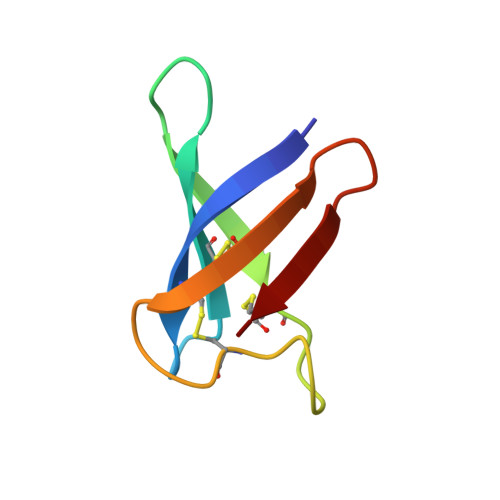Calixarene-mediated assembly of a small antifungal protein.
Alex, J.M., Rennie, M.L., Engilberge, S., Lehoczki, G., Dorottya, H., Fizil, A., Batta, G., Crowley, P.B.(2019) IUCrJ 6: 238-247
- PubMed: 30867921
- DOI: https://doi.org/10.1107/S2052252519000411
- Primary Citation of Related Structures:
6HA4, 6HAH, 6HAJ - PubMed Abstract:
Synthetic macrocycles such as calixarenes and cucurbiturils are increasingly applied as mediators of protein assembly and crystallization. The macrocycle can facilitate assembly by providing a surface on which two or more proteins bind simultaneously. This work explores the capacity of the sulfonato-calix[ n ]arene (sclx n ) series to effect crystallization of PAF, a small, cationic antifungal protein. Co-crystallization with sclx 4 , sclx 6 or sclx 8 led to high-resolution crystal structures. In the absence of sclx n , diffraction-quality crystals of PAF were not obtained. Interestingly, all three sclx n were bound to a similar patch on PAF. The largest and most flexible variant, sclx 8 , yielded a dimer of PAF. Complex formation was evident in solution via NMR and ITC experiments, showing more pronounced effects with increasing macrocycle size. In agreement with the crystal structure, the ITC data suggested that sclx 8 acts as a bidentate ligand. The contributions of calixarene size/conformation to protein recognition and assembly are discussed. Finally, it is suggested that the conserved binding site for anionic calixarenes implicates this region of PAF in membrane binding, which is a prerequisite for antifungal activity.
Organizational Affiliation:
School of Chemistry, National University of Ireland, University Road, Galway, Ireland.
















